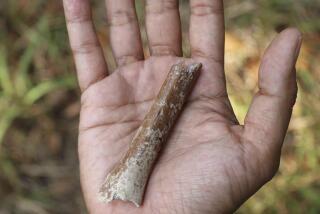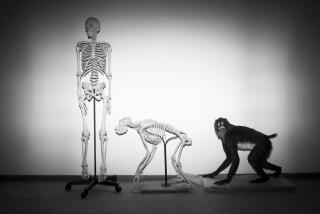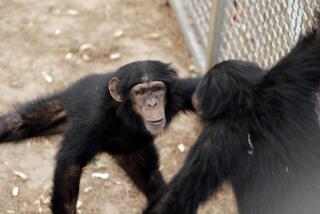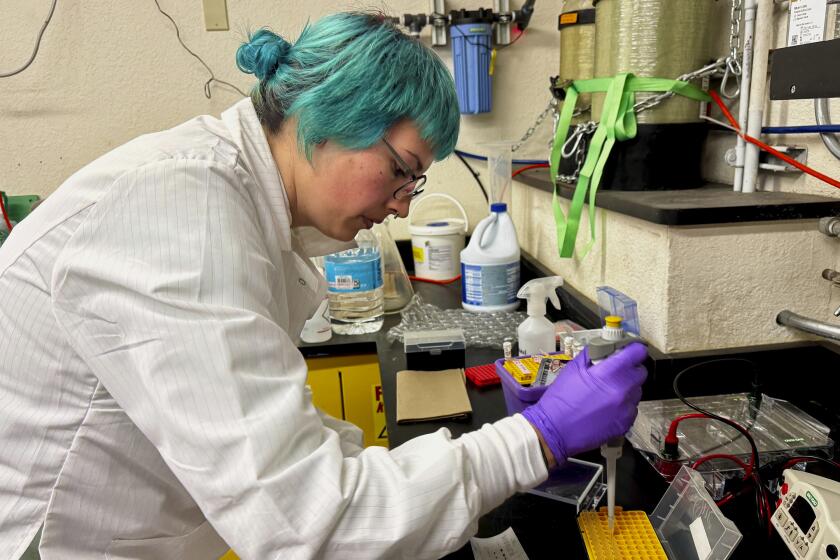Ancestor of all apes might not be what scientists expected, new fossil shows
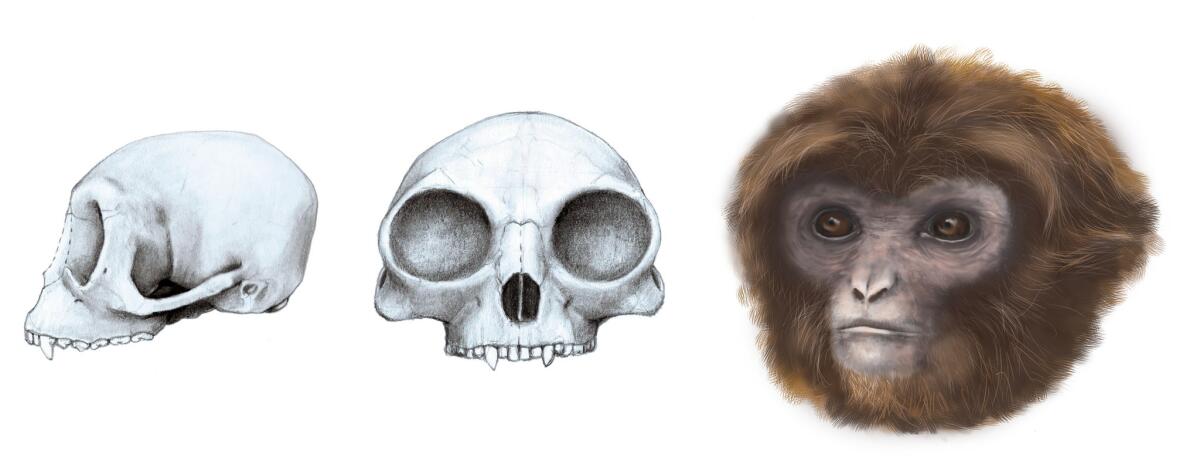
Pliobates cataloniae, an extinct species of primate, may shed light on the common ancestor of lesser and great apes.
- Share via
One man’s trash heap is a scientist’s treasure trove. A fragmented skeleton dug out from a Spanish landfill may force scientists to redraw their theories on the ancestor of humans and all other apes.
Pliobates cataloniae, described in the journal Science, reveals that the common ancestor of humans, gorillas and gibbons may have looked more gibbon-like than previously thought.
Researchers believe that Old World monkeys and apes split off from each other around 25 million to 30 million years ago, and later the Old World apes split again into “lesser” apes (whose modern-day members include gibbons) and great apes (whose descendants today include gorillas, chimpanzees, bonobos and humans).
Filling in the gibbon lineage could help researchers understand what the ancestor to all apes looked like, but the problem is that there aren’t all that many good specimens in the fossil record, said lead author David Alba, a paleobiologist at the Catalan Institute of Paleontology Miquel Crusafont in Spain.
“These lesser apes must have diverged quite early, like say between 15 and 20 million years ago, but the oldest possible fossil gibbon is only about 7 million years old -- so we are missing most of the history,” Alba said. “We have a large gap in the record.”
It’s long been thought that this ancestor of all apes, great and small, must have had a lot of great-apelike characteristics. Hylobatids, the group of lesser apes that includes gibbons, were typically treated like a “dwarfed” version of the great apes.
But the genus represented by the newly described Pliobates may contradict that notion. This female would have weighed around 9 to 11 pounds and lived in trees, dining on soft, ripe fruit, much like gibbons and most other living apes today. The partial skeleton included 70 bony elements, including enough fragments to piece together the skull and an arm.
Even though Pliobates has several more modern, or “derived” traits, it also shares a lot of “primitive” features that would have been characteristic of the ancestor of Old World monkeys and apes -- even though Pliobates lived only 11.6 million years ago, well after monkeys and apes split and the two ape groups later diverged.
Its relative brain size “implies a monkeylike degree of encephalization,” the study authors wrote, similar to gibbons but below that of great apes.
Pliobates’ wrists also seemed more apelike, in that they allowed for enough rotation to perform careful climbs in trees. And yet, the elbow was missing a key feature that helps apes stabilize the joint when hanging from branches.
On top of all this, Pliobates’ bony ear seems even more primitive than that of a 28-million-year-old ancestor to Old World apes and monkeys.
How does such a mix of “primitive” and more “derived” features come about? Scientists think part of the reason is convergent evolution -- that is, similar anatomical features may have evolved separately in different lineages over time.
The problem is, it’s really difficult to determine which traits are inherited and which ones may just be coincidence.
In a commentary on the study, Brenda Benefit and Monte McCrossin of New Mexico State University point out that there are a few different explanations for the chimeric specimen. It potentially could be that Pliobates is merely an ancestor of gibbons, for example.
But Alba and co-authors say that, based on an analysis of 300 skull and other skeletal features, the overall body of evidence supports the idea that this specimen is related to that common ancestor of all apes.
Unfortunately there are relatively few specimens that could be used to fill in the gaps and narrow down the possibilities, the scientists said.
“Only the discovery of other complete fossils, like that of Pliobates, and a better understanding of the mechanisms influencing morphological development and convergence will help to elucidate the complex history of ape evolution,” Benefit and McCrossin wrote.
Follow @aminawrite on Twitter for more science news.
